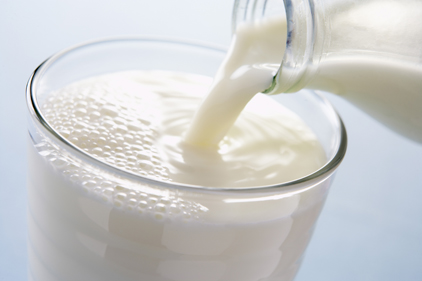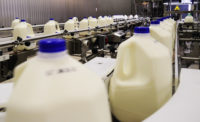Here are highlights from the USDA's Dairy Market News for the week of Sept. 25 to 28. Download the complete report.
Demand for mozzarella, Cheddar is good this week
 CHEESE HIGHLIGHTS: Cheese production is mostly steady with recent weeks as manufacturers look to secure more milk for cheese vats. Demand for mozzarella is good as new pizza promotions are surfacing. Cheddar sales are also good as processors are looking to secure additional product. Export sales are slower with the recent price increases, but the CWT program continues to aggressively promote sales with their assistance. The program has assisted with the sale of 91.6 million pounds so far this year. Cold storage data indicates that stored inventories of all cheese at the end of August to be down 6% from last year. Last week’s price increase was followed this week with more aggressive bidding early this week. Prices have passed the $2.0000 mark for both blocks and barrels at the CME Group. Sales have been light on the barrel side with block sales moderate.
CHEESE HIGHLIGHTS: Cheese production is mostly steady with recent weeks as manufacturers look to secure more milk for cheese vats. Demand for mozzarella is good as new pizza promotions are surfacing. Cheddar sales are also good as processors are looking to secure additional product. Export sales are slower with the recent price increases, but the CWT program continues to aggressively promote sales with their assistance. The program has assisted with the sale of 91.6 million pounds so far this year. Cold storage data indicates that stored inventories of all cheese at the end of August to be down 6% from last year. Last week’s price increase was followed this week with more aggressive bidding early this week. Prices have passed the $2.0000 mark for both blocks and barrels at the CME Group. Sales have been light on the barrel side with block sales moderate.
Nonfat dry milk markets are firm
DRY PRODUCTS: Prices and market tones for most all manufactured dry products are steady to firm. Nonfat dry milk markets are firm. Most NDM production is trending towards low heat powder with intermittent runs of high heat to replenish inventories for contract fulfillment. Buttermilk powder markets are firm with prices higher across the board. Dry buttermilk production is mixed, depending of cream utilization trends. Some regions of the country continue to absorb good volumes of cream into Class II operations, while other regions are seeing more cream clearing to the churn, generating more buttermilk, although Class II cream demand is expected to increase in the near future, limiting buttermilk volumes. Whey powder markets are firm. Manufacturing milk supplies vary across the country thus cheese output is mixed, often limiting whey volumes for the drier. Stocks of whey are about balanced, although some whey is moving from one region to another.
Milk production declines in north, rises in south
 FLUID MILK: Milk production trends across the country vary from declines in the northern tier of states to slight increases in southern regions. Although milk volumes are increasing in southern regions, milk volumes often remain short of full needs. Demand from East/ Southeast bottlers pulled milk from other regions to fulfill their Class I needs. Manufacturing milk volumes are also challenging for cheese makers as they gear up production schedules for upcoming holiday needs. Cream markets are firm. Cream volumes from coast to coast vary depending on the milk flow and class utilizations. In most regions, Class II demand has slowed, especially for ice cream, but holiday cream based product production is on the eve of increasing. Class IV demand is strong as butter producers are churning as heavily as they can to prepare for upcoming 4th quarter and holiday needs.
FLUID MILK: Milk production trends across the country vary from declines in the northern tier of states to slight increases in southern regions. Although milk volumes are increasing in southern regions, milk volumes often remain short of full needs. Demand from East/ Southeast bottlers pulled milk from other regions to fulfill their Class I needs. Manufacturing milk volumes are also challenging for cheese makers as they gear up production schedules for upcoming holiday needs. Cream markets are firm. Cream volumes from coast to coast vary depending on the milk flow and class utilizations. In most regions, Class II demand has slowed, especially for ice cream, but holiday cream based product production is on the eve of increasing. Class IV demand is strong as butter producers are churning as heavily as they can to prepare for upcoming 4th quarter and holiday needs.







